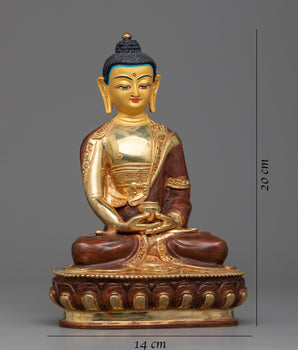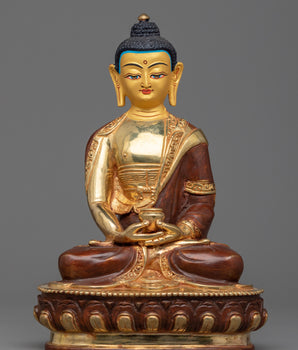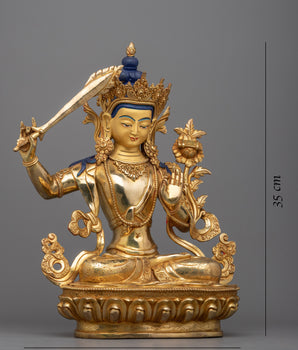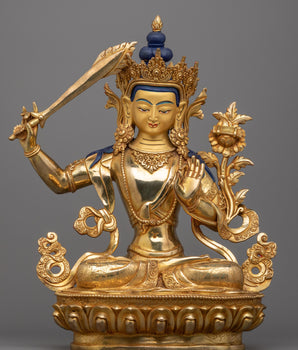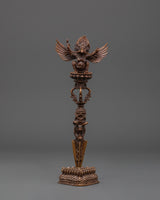
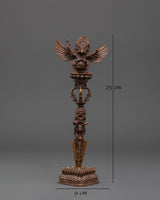
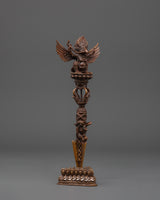
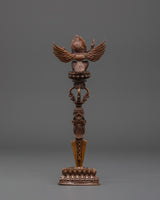
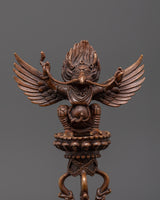
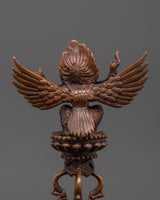
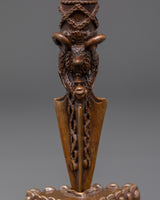
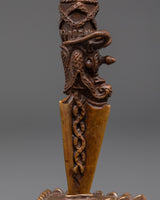
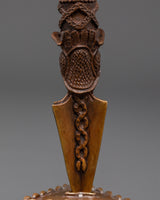
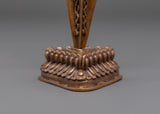
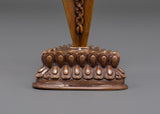
Handcrafted Tibetan Ritual Phurba | Spiritual Protection Dagger

100% AUTHENTIC

HANDMADE

FREE SHIPPING
Handcrafted Tibetan Ritual Phurba | Sacred Ritual Oxidized Copper Dagger
--------------------------------------------
Size: 25cm (Height) x 9cm (Width)
Weight: 0.54kg
Material: Oxidized Copper Body
--------------------------------------------
About The Ritual Item :
This Handcrafted Tibetan Ritual Phurba is a beautifully constructed spiritual tool that represents the tremendous symbolism of Tibetan Buddhist practice. This phurba, made of corroded copper, reaches 25 cm tall and has complex engravings that showcase traditional Himalayan workmanship. The copper body's rich, dark patina highlights the depth of the intricate designs, resulting in a religious object that is both visually stunning and spiritually profound.
At the summit of the phurba is the powerful Garuda deity, a legendary bird representing strength, protection, and the annihilation of evil. The Garuda's spread wings and robust stance represent its capacity to soar above obstacles and defeat bad forces. The center of the blade bears traditional Tibetan decorations, including knot motifs that represent the endless cycle of life and the power of transformation, symbolizing the phurba's role in the ritual practice of capturing bad energies and protecting the practitioner.
Aside from its artistic splendor, this Tibetan ritual phurba is a sacred spiritual instrument used for meditation and ceremonial rites. It channels protective and purifying forces, making it a must-have for individuals interested in Tibetan Buddhism or spiritual instruments. The combination of handcrafted rusted copper and elaborate designs adds authenticity and depth to this phurba, making it both a strong ceremonial dagger and an intriguing treasure.
Introduction To The Phurba :
The ceremonial dagger (Sanskrit: Kila; Tibetan: phurba) is essential for expelling evil and is considered particularly effective in neutralizing the forces obstructing Tantric Buddhist practice. It has ancient origins, first appearing in the Indian Rig Veda as the core blade of the vajra used by Indra to destroy the primordial cosmic snake Vritra. Kila, derived from Sanskrit, was most likely associated with Vedic sacrifices. Meditation on the Vajrakila Tantra, an early Indian scripture first promoted in Tibet in the eighth century by Padmasambhava, one of the founding teachers of Tibetan Buddhism, is used to invoke the three-headed Vajrakila Buddha.
How to Set Up Your Buddhist Shrine?
Find a clean, quiet, and uncluttered spot.
Please set up an altar table and cover it with an altar cloth that calls to you.
Place your sacred item (statue, thangka, or a picture of Buddha) at the center.
















